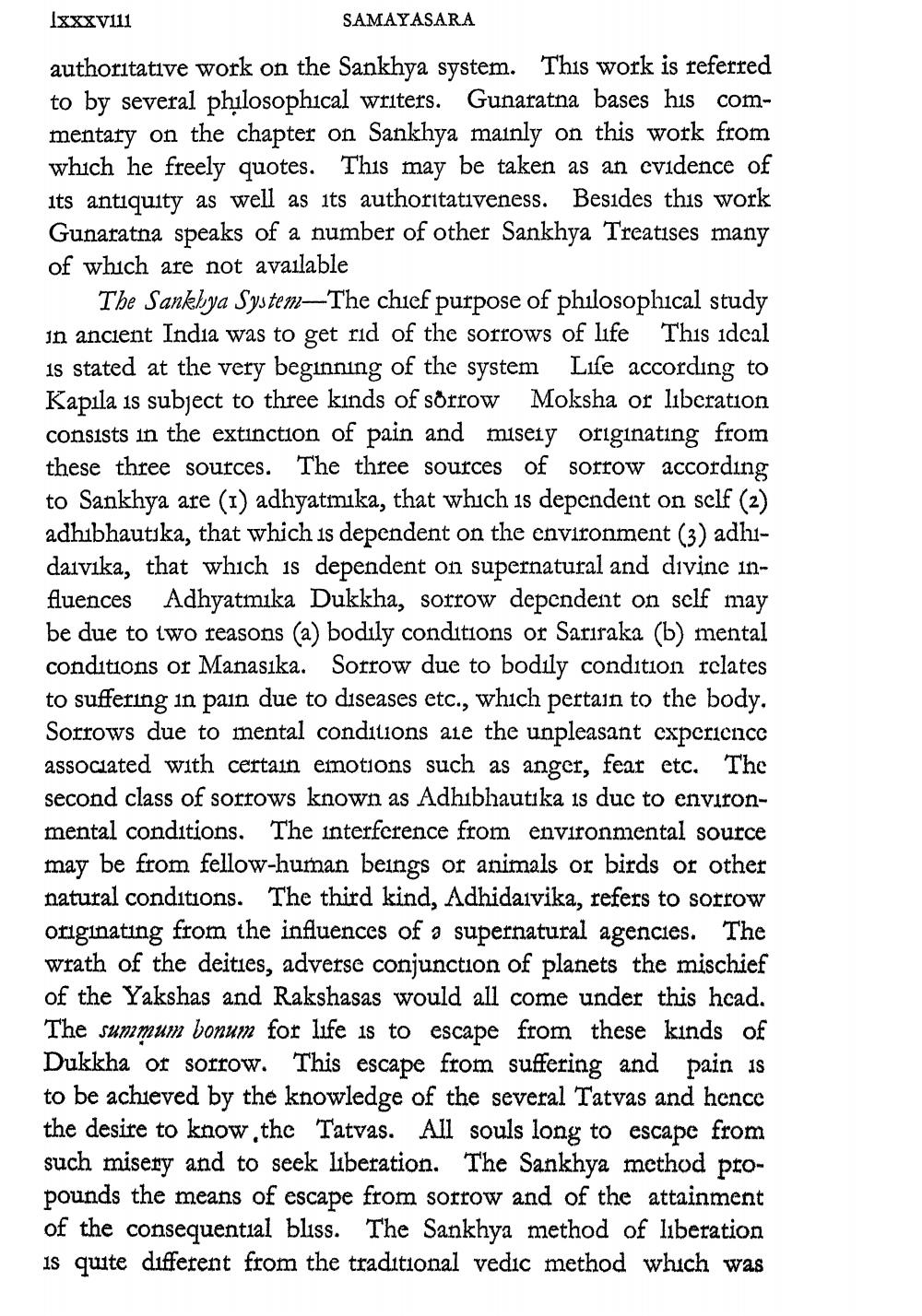________________
Ixxxvi11
SAMAYASARA
authoritative work on the Sankhya system. This work is referred to by several philosophical writers. Gunaratna bases his commentary on the chapter on Sankhya mainly on this work from which he freely quotes. This may be taken as an evidence of its antiquity as well as its authoritativeness. Besides this work Gunaratna speaks of a number of other Sankhya Treatises many of which are not available
The Sankhya System-The chief purpose of philosophical study in ancient India was to get rid of the sorrows of life This ideal is stated at the very beginning of the system Life according to Kapila is subject to three kinds of sorrow Moksha or liberation consists in the extinction of pain and misery originating from these three sources. The three sources of sorrow according to Sankhya are (1) adhyatmika, that which is dependent on self (2) adhibhautika, that which is dependent on the environment (3) adhidaivika, that which is dependent on supernatural and divine influences Adhyatmika Dukkha, sorrow dependent on self may be due to two reasons (a) bodily conditions or Sariraka (b) mental conditions or Manasika. Sorrow due to bodily condition relates to suffering in pain due to diseases etc., which pertain to the body. Sorrows due to mental conditions ate the unpleasant experience associated with certain emotions such as anger, fear etc. The second class of sorrows known as Adhibhautika is due to environmental conditions. The interference from environmental source may be from fellow-human beings or animals or birds or other natural conditions. The third kind, Adhidaivika, refers to sorrow originating from the influences of a supernatural agencies. The wrath of the deities, adverse conjunction of planets the mischief of the Yakshas and Rakshasas would all come under this head. The summum bonum for life is to escape from these kinds of Dukkha or sorrow. This escape from suffering and pain is to be achieved by the knowledge of the several Tatvas and hence the desire to know, the Tatvas. All souls long to escape from such misery and to seek liberation. The Sankhya method propounds the means of escape from sorrow and of the attainment of the consequential bliss. The Sankhya method of liberation is quite different from the traditional vedic method which was




